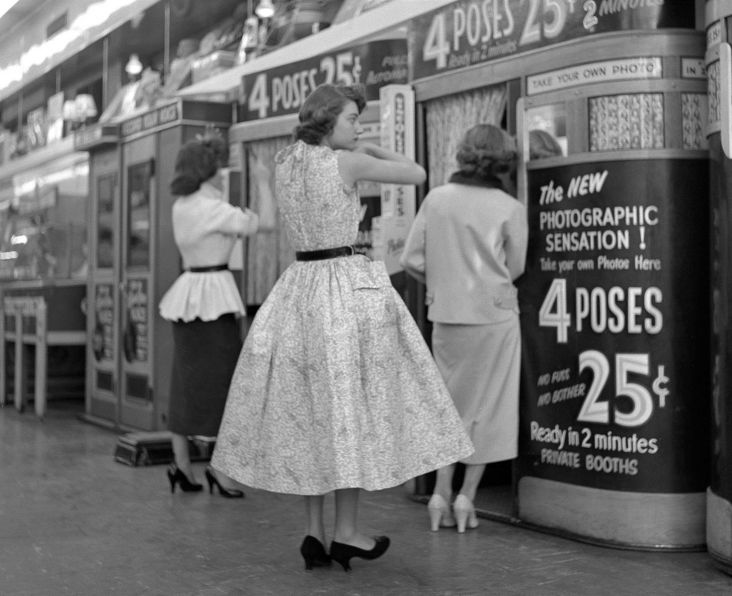
The world of rock music has been altered beyond all recognition by the digital transformation of our society. While vinyl might be popular amongst hipsters, it's no longer the huge, mass-market banker it once was. And while bands may be able to earn a few pennies on Spotify, that's not enough to make music a career for more than a few global megastars.
The only serious money, then, is in live performance. But the vertical integration of Live Nation and Ticketmaster – currently being sued for monopolising the market by the US government, no less –means that even most of that money goes elsewhere.
In a world where everything has changed, and not for the better, Marshall amps represent a rare thing: a comforting symbol of nostalgia that's still relevant today.
The client
Marshall's long-lasting, high-quality amps have been prominent since the 1960s. For those who came up during the 1960s-1990s in particular, when health and safety had yet to bring decibels down to a tolerable level – they evoked the all-enveloping "wall of noise" that rock and roll was all about for previous generations.
And it's not just what they sounded like, but what they looked like too. The distinctive Marshall logo and the classic look of their amplifiers were instantly recognisable, triggering positive associations and memories for fans and musicians alike.

In short, Marshall is a rock music icon, as much as the Beatles, The Stones or Led Zepellin. Yet it couldn't become a relic: it needed updating to bring it in line with the modern day.
After all, it's no longer just about amps. Marshall delivers its iconic sound to stages, studios, and the streets with audio equipment, headphones, and speakers while supporting musicians in creating, recording, producing, and promoting their music through its record label and live agency.
So the company teamed up with Barkas, an independent brand studio founded ten years ago, which now has offices in Copenhagen, Stockholm and Oslo. Marshall asked Barkas to future proof their identity by crafting a new design system, a full remake of marshall.com and a deeper understanding of the core of the brand. It was a project that involved over 100 people.
The brief
The brief from Marshall was to future-proof its legacy and attitude through a ground-up identity refresh, with the ambition to unite two businesses under a common brand. "The aim was to bring Marshall into a new era and build an online platform that sells Marshall's epic products to the world," explains Luca Rasmussen, partner in Barkas.
"They'd already done a great amount of work on their brand platform and what they are all about when we got on board," he adds. But that didn't mean the task was an easy one. "Marshall is an icon and has die-hard fans, so you have to come at it with respect," he stresses.

"It is like rebranding or working with a football club; people literally have the crest or logo tattooed onto them. So the challenge is: how do you stay true to the essence while also pushing the bar in an authentic way?"
Brand concept
"In the middle of rock n roll, you find a rebel," says Luca. "But that rebel can listen to any type of music today; it's more of an attitude than a genre."
This insight set the foundation for the design principles that laid the foundation for the visual identity. "A rebel is bold, dynamic, loud and rough around the edges, all those expressions we wanted to infuse into the design system," says co-founder and creative director Mike Wittrup.
The design system aimed to structure a free approach to art direction, which was kept deliberately open to embrace all genres of music and modernise the overall brand perception and relevance for a new generation of fans and music lovers.
To develop it, Barkas worked closely with the in-house Marshall team. "We'd check in at least once a week to jump into our Figma doc and share our progress," recalls brand designer Miriam Nicole Zirignon. "We started wide – conceptual ideas on what rock n' roll looks like in the digital age – zooming into smaller and smaller details once we'd cracked the conceptual nut. A lot of sketching, scrapping, and sketching again, looking back to the brand's history and looking forward to what it can become."
"This tight and collaborative approach, with regular check-ins rather than big presentations, ensured that we kept good momentum and energy throughout both explorative conceptualisation and the detailed production phase," adds Didrik Persson, digital director and partner.
Logo
Senior designers Miriam Nicole and Mafalda Remoaldo led the charge in bringing Marshall's legacy to life. To them, staying true to the brand was extremely important.
"We didn't touch the design of the iconic box logo; there was no need," says Miriam. "Rather, we made sure to solidify it as THE Marshall logo by minimising the use of secondary versions, unifying the brand. The box also became a playground and an element we could use through communication online and offline.
"We used the box logo as the starting point to determine the grid – margins, gutters and some spacings," she adds. "However, within the grid, there is now more flexibility for text, graphics and image placement than before, moving from print-first to digital and expanding use cases.
"Our main objective was to build a brand that can live for another 60 years," she adds. "And for that, you need a balance of a consistent base layer and flexible art direction."
Design system
The design system consists of a small number of components on the box grid, explains senior digital designer Morten Rosendal. "We stuck to one typeface family with loud and confident headlines in all caps, contrasted by technical and functional body type. The colours are black, grey and white. And when we get down to product specs, we have icons and technical illustrations.
"This is what we call the base layer, supporting and contextualising the expressive content created by the Marshall team and their community," he adds. "Mixed media image manipulation, disruption and distortion – all is allowed in this art direction layer."
"Motion design also plays a big role, tying it all together in a fast-paced rhythm. Inspired by Marshall as a cultural amplifier, we also created an animated treatment of the logo where it plays as a magnifier over an asset."
Website redesign
"The brand identity set the foundation for the website," says Morten. "Once that foundation was complete, the work into creating a concept for the website began."
The rethinking of marshall.com was all about welcoming a whole new portfolio of products to live side-by-side with the iconic amps. "Marshall is more than headphones, speakers and amps," explains Morten. "It's a stage for music and music lovers — and we wanted that to shine through by introducing the Backstage article hub, inspiring product listing pages and a modular storytelling system that can be utilised throughout the website."
The aim, then, was to merge an iconic and tactile heritage brand with its global consumer base. As VP of eCommerce Thomas Farnstrom puts it: "We collected all Marshall's product categories, offers, a solid 60-year history, and experience of music, all in one place."
"The brand new marshall.com is more than headphones, speakers and amps," says Morten. "It's a stage for music and music lovers, and we wanted that to shine through. Not only can you purchase your favourite product, but you can also read about upcoming and established artists, find useful content as a music professional, and dive into the world of Marshall music history. All of this is made possible through a dynamic and modular system that opens up for storytelling through engaging words, punchy quotes, and exciting images and video material."
Didrik adds, "With the new Marshall.com, we wanted to introduce a more immersive shopping experience – one that blends extensive product storytelling with best-practice e-commerce across all product categories."
A specific example is the flow of the product listing pages, which consists of a product gallery and a buy box with all the need-to-know information above the fold. "Below the fold the product is unfolded through an immersive storytelling area that can be expanded based on the needs for that specific product. In that way, the system can then cater for everything from product accessories to hero products where more storytelling is needed.
"In other words, Marshall.com now both converts through optimised conversion flows and inspires conversion through artist and music storytelling."
Collaboration
"It's been fantastic and exciting to work with a brand that wants to be more than just clean, functional and minimalistic," says senior digital designer Morten Rosendal in conclusion. "Marshall's legacy and history provided us with ample motivation to deliver a digital experience that respects the brand's heritage while embracing its future."
"When we started the project, it soon became clear to us that rock n roll is not just a music genre, it an attitude, a way of being," adds Mike. "This attitude doesn't only wear black leather jackets; it looks in many different ways, and it's actually more about what values drive you than the aesthetics."




 by Tüpokompanii](https://www.creativeboom.com/upload/articles/58/58684538770fb5b428dc1882f7a732f153500153_732.jpg)




, featuring some of his own top picks](https://www.creativeboom.com/upload/articles/fb/fb68ac17f1e5572502d7ebf1c53fb086d5cbd4cd_732.jpg)














